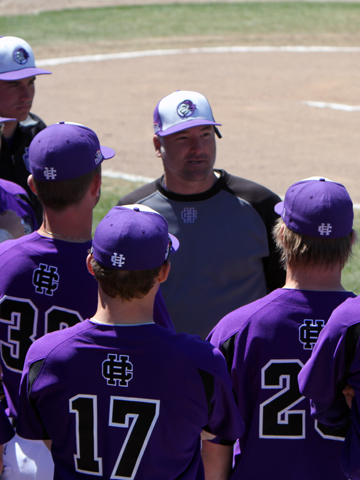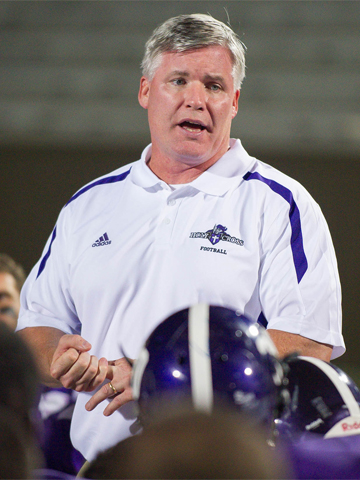
by Becky Bedics, Ed.D., Director of the Holy Cross Leadership Academy
Each week we are privileged to learn from so many coaches and student-athletes from programs across the country. We’ve been very fortunate to partner with Holy Cross, a member of the Patriot League, over the past few years. Here are some practical and proven ideas you can use with your team from the coaches and student-athletes from the Holy Cross Leadership Academy.
1. Core Values and Culture Building
Head men’s hockey coach Paul Pearl has his team create a “team core values” statement that they create separately from the coaching staff. He has found that it gets the younger team members involved and invested from the start. Head volleyball coach Erin Cady has her team develop a mantra/slogan and team goals for each season. The team creates a visual representation to hang in the team locker room to keep those goals top of mind throughout the season. This past season, the team created a ladder and had each step represent something that would get them closer to their goal. It was a great visual representation of what was required to achieve what they want to do.
2. Team Building Ideas

Head baseball coach Greg DiCenzo also facilitates team events such as climbing/hiking/racing up Mount Monadnock in New Hampshire, going to the movies as a team, and paintballing.
While every school does not have a nearby mountain to climb, or proximity to ropes challenge courses, the opportunity to take a step back and focus on team issues in a closed environment is helpful. Coach Koolman facilitates a Goal Setting Afternoon where “players and coaches discuss short and long term goals and leadership themes.” The also break into smaller groups and use case studies to discuss leadership “what ifs” and debate how to handle situations in a safe environment.
Similarly, head field hockey coach Zowie Tucker also incorporates activities such as a self-defense class and problem-solving sessions with a designated team leader who takes command and brings the team through simulated pressure situations. Holy Cross men’s hockey coach Pearl has found it useful to take the players out of practice once in a while and go bowling to foster teambuilding in a fun, non-stress environment (although it’s still very competitive!). Head women’s basketball coach Bill Gibbons and his staff also use summer break as a time to conduct voluntary team building activities with those student-athletes who are still on campus.
3. Proactively Partner with Your Team Leaders
Let’s face it, nobody waits with bated breath for their car’s fuel gauge to get to “E” so they can stop everything they are doing, go to the gas station, open their wallet, and fill their tank. However, if you keep going along, ignoring the warning light, you WILL run out of gas, and then have a larger, more time-consuming problem on your hands.

Tom Gilmore, Head Football Coach, has been at the helm of the Crusaders for over a decade. His strategy for developing a “Leadership Depth Chart” and preventing a “leadership void” is to have a Leadership Council, comprised of two to three members of each class who have been elected by their peers. Coach Gilmore states that they meet every two weeks during the season and once per month in the off season to “discuss topics, mainly concentrating on improvements needed or existing problems.” He feels that these meetings “allow the players to feel like they are truly part of building the program and it empowers them to lead the way for improvements.”
While some coaches may feel that meeting with their leaders to discuss leadership concepts frequently might seem too time-consuming and costly, what is the cost of not doing so?
Our Championship Coaches Network members can click here to read Part 2 of this article.

No comments:
Post a Comment